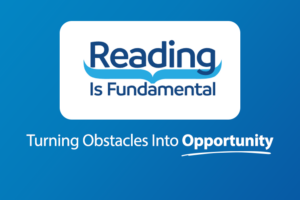Steve Delfin | October 26, 2012
“Wow Factor of Workplace Giving Programs” Step #3: Trust & More Involvement
How do you get your employees to WANT to participate in your workplace giving program?
In my last post we discussed the significant impact that offering more options can have on your campaign and overall corporate responsibility (CR) efforts. Today I’d like to talk about the remaining two key factors – trust and more involvement. These two factors go hand-in-hand and without one, it is difficult to achieve the other.
Trust:
When it comes to “trust,” employees want to know that their donations are going to their designated charity of choice and they want to know that they can trust that charity. They also want to know that the employer’s intentions are good and trustworthy. Employers also want this. In order to ensure that their employees are presented with responsible, trustworthy charity choices, employers need a workplace-giving partner who they can trust – someone who can properly vet charities and someone the company can count on for quality service, strategic advice, and results.
More Involvement:
Obviously, if an employer is going to invest time and resources into offering a workplace give campaign to employees, that employer is going to want to see positive results – which, depending on the company’s specific goals, could mean more money raised, increased participation rates, and/or a strong turnout at company events (i.e. charity fairs, volunteer activities). Employees want to be involved in your company’s workplace giving campaign, however; the degree to which employees are involved and enthusiastic about your company’s workplace giving program and other corporate philanthropic programs has to do with the extent to which trust, values and a purpose-driven mission guide your program and leadership’s intentions.
In the last 10 years, there has been a tremendous shift in the giving climate and the way companies employ workplace-giving campaigns. Now, it is commonplace for companies to strategically incorporate workplace-giving programs with their overall CR efforts by aligning key business objectives and partnerships with specific society issues and desired impact. This is all greatly encouraged and certainly has helped charities and communities make a more significant impact together. But, ask yourself – what primary drivers are being used to encourage employee participation? Is your program more task-based or values-based? Do your employees feel inspired to participate or do they feel coerced?
Every employee is different and many factors (i.e. education, income, age) will determine how and why they give, but regardless of those differences, the primary driver used to encourage their involvement will be the difference between night and day. If your approach is task-based or coercive, you might achieve reasonable participation rates and results, but not nearly as great and inspiring as the results you’ll achieve if your approach is driven by values with which your employee can identify and take great pride.
Organizational Identification:
People tend to identify with organizations when they perceive that their individual attributes overlap with the organization’s attributes. (This is part of social identity theory – something many of you may have learned in college and rely on for organizational management.) This theory can be used to explain how your company can inspire employees to care about your workplace giving campaign and overall CR initiatives:
- Matching values & Collective Interest: Your company’s workplace giving and CR activities reveal quite a bit about your organization’s character. Your employees are likely to identify with your company if you are socially responsible, especially if your company’s values match theirs. When employees identify with your company, they also tend to have great trust in your organization and its leadership. The more employees identify with your organization, the more your organization’s values and interests will be integrated in your employees’ self-concept. Through this collective interest, employees will be motivated to adopt your company’s goals and to act with your company’s best interests in mind – in this case, your workplace giving campaign!
- Pride: Socially responsible organizations tend to gain positive public reputations. When the public thinks highly of your organization and your company is acknowledged for its positive contribution to society, your employees take great pride in that. Not only will they feel proud to belong to your organization, they will also want to have an active role in your organization’s efforts.
What all this means:
The approach you take with workplace giving and your broader CR initiatives offers your company a unique opportunity to make a significant impact on society AND on the social dynamics of your organization internally.
While task-based and coercive approaches might give you results, those results will be transient, limited and will likely result in a disconnect between employees and the company. Employees may be unsatisfied with the experience, and in some cases may actually resent the company’s motives, causing them not to participate or work against your company’s objectives.
Employers who take a values-based/purpose-driven approach can influence employees’ perceptions of the company by enhancing positive workplace attitudes, gaining employee trust and buy-in, and resultantly can stimulate greater workplace giving results and employee involvement. When you combine that with more options (as we discussed earlier), you have a recipe for a successful workplace giving campaign.
Steve Delfin
|
Get Resources and Insights Straight To Your Inbox
Explore More Articles
Workplace Fundraising + Volunteering Summit (April 2nd and 3rd, 2025)
Join us in attending this virtual summit! The America’s Charities team is joining up with other leading voices in the workplace giving space for a…
Read ArticleThe Time to Act is Now
The results of the 2024 National Assessment of Educational Progress (NAEP) are in, and the findings are, in a word, heartbreaking. This assessment serves as…
Read ArticleOpen Position: Non-Profit Account Manager, Employee Assistance Funds & Scholarships (Remote – Full Time)
We are professional, agile, customer-centric and our goal is to inspire employees and organizations to support causes they care about. We help nonprofits fundraise unrestricted,…
Read ArticleGet Resources and Insights Straight To Your Inbox
Receive our monthly/bi-monthly newsletter filled with information about causes, nonprofit impact, and topics important for corporate social responsibility and employee engagement professionals, including disaster response, workplace giving, matching gifts, employee assistance funds, volunteering, scholarship award program management, grantmaking, and other philanthropic initiatives.


 Steve has 30 years of experience working in and with major national and international not-for-profit organizations and socially-responsible international corporations, including a long history of engagement with and leadership around workplace giving and employee volunteerism programs.
Steve has 30 years of experience working in and with major national and international not-for-profit organizations and socially-responsible international corporations, including a long history of engagement with and leadership around workplace giving and employee volunteerism programs. 

